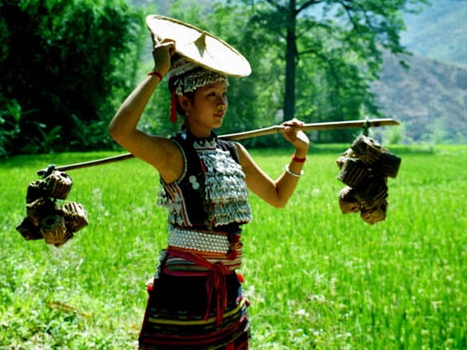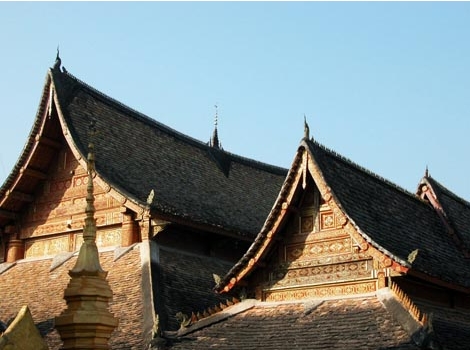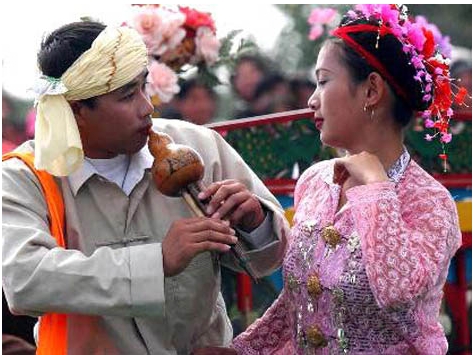There are many distinctive marriage customs of the Hua Yao Dai People, an ethnic minority mainly distributed in the Yunnan Province of China. These marriage customs are very attractive, as many people have never heard of them.

The bride and groom set an auspicious day for the marriage ceremony after discussing the necessities of the ceremony. As early as the morning of the wedding day, the groom's family and friends begin to butcher cattle and pigs and prepare vegetables for the feast. Then after lunch, the groom and the groomsmen, as well as the cooks and some young helpers, set off with beef, pork and wine on their shoulders in a long line majestically. They are going to the bride's home to treat her and her friends. As soon as they get there, several little girls (called "Xiao Bo Shao" in Hua Yao Dai People) standing on the house will splash auspicious water to welcome them. Then the old people lead the cooks and the helpers to cook dishes. One member of each family in the village will attend the feast with his or her own tasty dishes.

Hua Yao Dai People usually holds their marriage ceremonies at midnight. At dusk, the matchmaker and two middle-aged women who know the marriage ceremony well, leading a group of people, start off to the bride's home to receive her. The bride's parents who have been waiting at the gate will propose a toast to them. The matchmaker and the two women raise a bowl filled with wine above head and splash the wine on the ground to toast the ancestors first. Then after the second toast, they enter the house to have dinner. The little girls frequently pour wine for them and the bride's party toasts them with their wine. Then the bride, followed by the groom holds a flagon, starts to make toasts to the elders and the group. Finally the couple get down on their knees before their parents who propose them a farewell toast. The mother shows she is attached to her daughter very much and the daughter shows her gratefulness to her mother for giving birth to her. They hold arms and cry, reluctant to depart from each other. After being pulled away by others, the bride is taken outside of the gate and then leaves. If there is a river on the way back, it is a must for the bridegroom to take his wife on his back to cross it.
The groom's mother and some elders have been waiting for the couple at the gate. With the nice sound of silver rings, the bride, supported by eight little girls, arrive at the gate. The mother-in-law walks up immediately and put a bamboo hat called "Ji Cong Dou Li" on her head. The little girls turn the hat deliberately and then the mother-in-law makes it right. They will do this several times, which means developing the mutual understanding between the mother-in-law and the daughter-in-law. Led by her mother-in-law, the bride enters the stall to feed the cattle. A story is going about that the cattle and the Dai People work hard on the farm together. The cattle eat grass, while the Dai People eat grain, so they worship the cattle and treat them as a totem.






